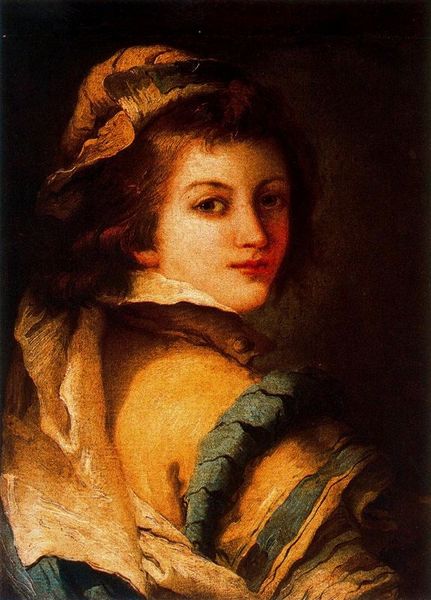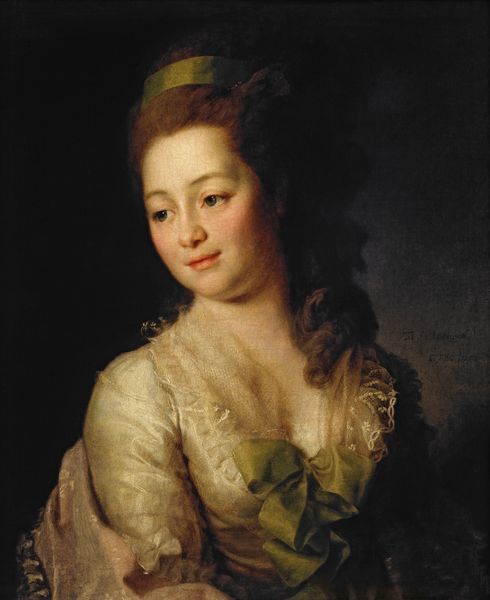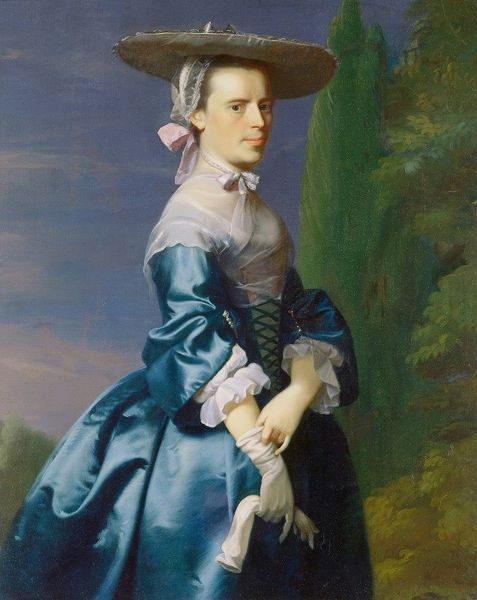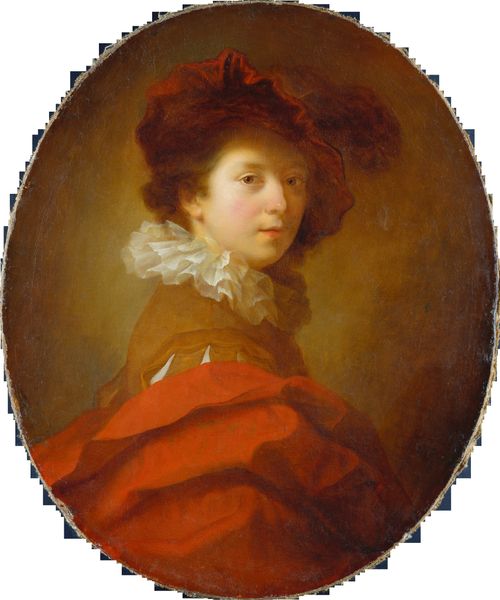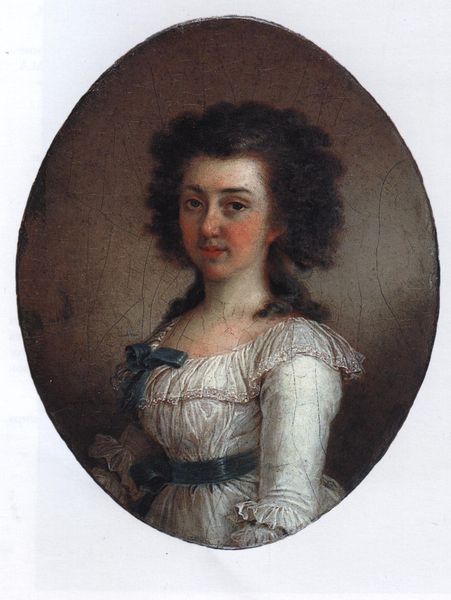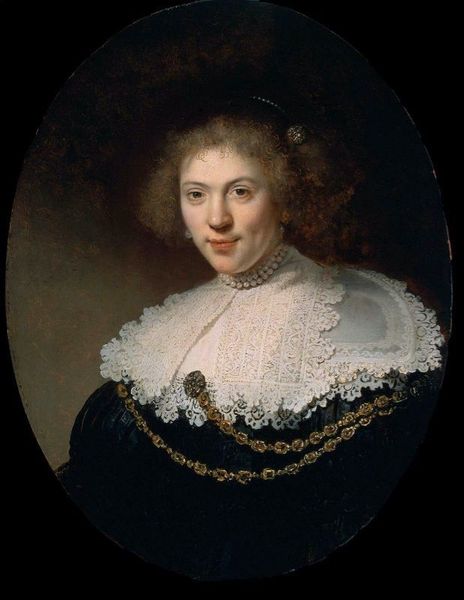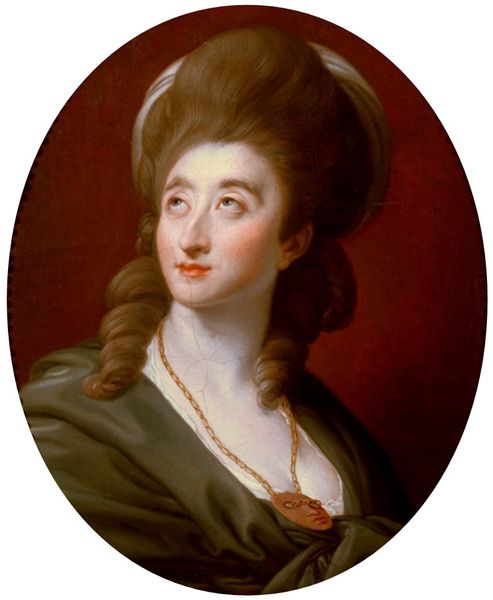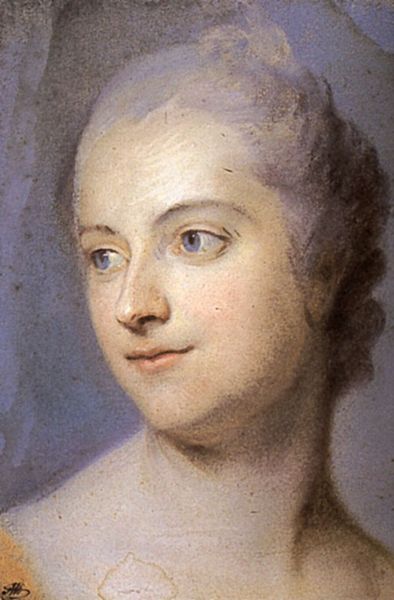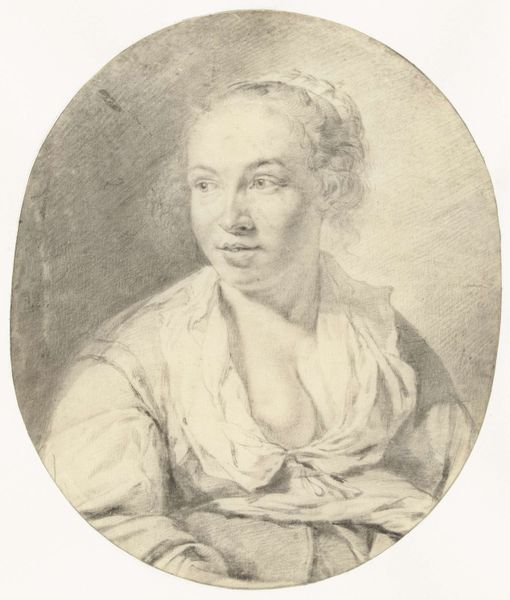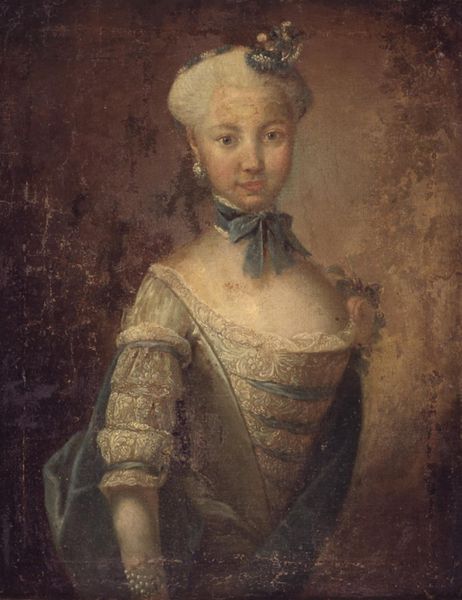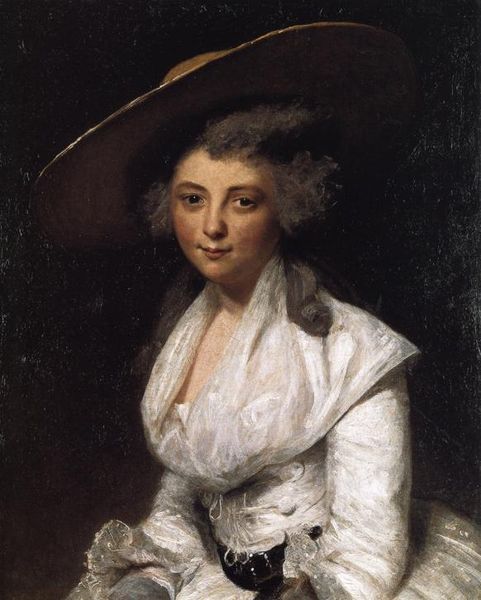
Copyright: Public domain
Editor: Here we have Jean-Honoré Fragonard's "Self-Portrait," painted in 1770, using oil paints. I find it quite striking how the soft, diffused lighting almost seems to glow from within. What formal elements stand out to you most in this painting? Curator: The composition relies heavily on the oval format, a common Rococo device, which immediately softens the potential severity of a self-portrait. Note how Fragonard employs a limited palette, primarily warm browns and creams, creating a harmonious and unified visual experience. Observe the impasto technique, particularly evident in the ruffled collar and the feather in his hat. How does this texture contribute to the overall effect? Editor: It makes those areas feel very tangible, almost like you could reach out and touch them, setting them apart from the smoother surfaces. Curator: Precisely. Consider the dynamic interplay between light and shadow, sculpting his features and clothing. Fragonard's gaze, direct and engaging, compels the viewer to confront the artist's persona. The slight asymmetry in his expression adds a touch of informality. What is your understanding of the formal function of the painter's tools displayed? Editor: They are symbols of his profession, meant to highlight the skill and craft that he possesses. I appreciate the artist using these visual elements to convey this idea through painting. Curator: Indeed. By analyzing these intrinsic formal elements, we gain a deeper understanding of Fragonard's artistic intentions. How would you describe your feeling towards this piece having thought of it in these terms? Editor: Before, I just appreciated the overall feeling. But now I have a newfound understanding that this depth stems from the visual cues the artist includes and the technical skill shown. Curator: Precisely. A close examination of the artistic approach helps reveal underlying narratives within a self-portrait.
Comments
No comments
Be the first to comment and join the conversation on the ultimate creative platform.
